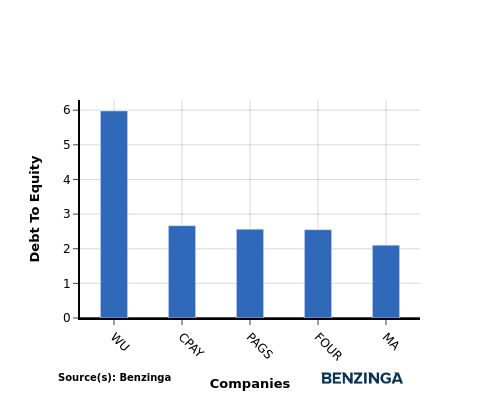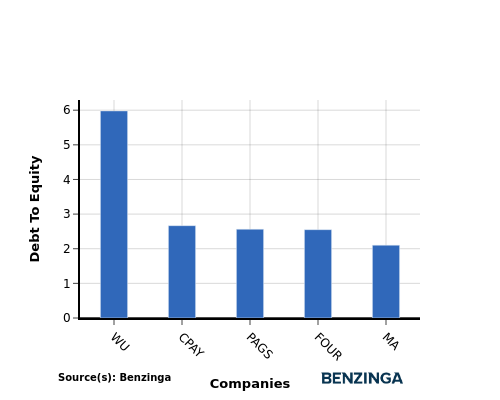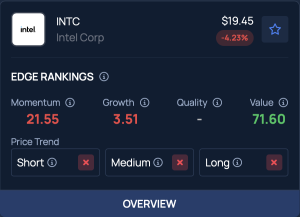
In the ever-evolving and intensely competitive business landscape, conducting a thorough company analysis is of utmost importance for investors and industry followers. In this article, we will carry out an in-depth industry comparison, assessing Mastercard MA alongside its primary competitors in the Financial Services industry. By meticulously examining key financial metrics, market positioning, and growth prospects, we aim to offer valuable insights to investors and shed light on company’s performance within the industry.
Mastercard Background
Mastercard is the second-largest payment processor in the world, having processed close to over $9 trillion in volume during 2023. Mastercard operates in over 200 countries and processes transactions in over 150 currencies.
| Company | P/E | P/B | P/S | ROE | EBITDA (in billions) | Gross Profit (in billions) | Revenue Growth |
|---|---|---|---|---|---|---|---|
| Mastercard Inc | 37.67 | 61.34 | 17.49 | 44.44% | $4.32 | $5.35 | 11.04% |
| Visa Inc | 30.49 | 14.47 | 16.67 | 12.62% | $6.45 | $7.13 | 9.57% |
| Fiserv Inc | 30.89 | 3.63 | 5.37 | 3.14% | $2.22 | $3.12 | 7.38% |
| PayPal Holdings Inc | 18.63 | 3.81 | 2.66 | 5.46% | $1.75 | $3.61 | 8.21% |
| Fidelity National Information Services Inc | 83.23 | 2.69 | 4.88 | 1.39% | $0.8 | $0.95 | 2.68% |
| Block Inc | 62.46 | 2.15 | 1.81 | 1.02% | $0.6 | $2.23 | 11.21% |
| Global Payments Inc | 20.31 | 1.26 | 2.89 | 1.68% | $1.08 | $1.63 | 4.74% |
| Corpay Inc | 22.33 | 7.75 | 5.89 | 8.38% | $0.51 | $0.77 | 2.9% |
| Jack Henry & Associates Inc | 33.19 | 6.87 | 5.72 | 5.58% | $0.18 | $0.23 | 4.73% |
| WEX Inc | 35.83 | 4.77 | 3.34 | 4.32% | $0.25 | $0.41 | 8.4% |
| Shift4 Payments Inc | 52.67 | 8.29 | 1.94 | 5.7% | $0.13 | $0.23 | 29.83% |
| Euronet Worldwide Inc | 17.56 | 3.72 | 1.31 | 6.76% | $0.18 | $0.41 | 5.02% |
| The Western Union Co | 7.16 | 9 | 0.98 | 33.62% | $0.24 | $0.4 | -8.85% |
| StoneCo Ltd | 10.41 | 1.25 | 1.60 | 3.29% | $1.13 | $2.25 | 11.86% |
| Payoneer Global Inc | 29.19 | 4.33 | 3.24 | 4.87% | $0.06 | $0.2 | 15.86% |
| PagSeguro Digital Ltd | 8.45 | 1.10 | 1.70 | 3.59% | $1.83 | $-0.02 | 6.74% |
| Paymentus Holdings Inc | 84.31 | 6.04 | 3.97 | 2.1% | $0.02 | $0.06 | 32.55% |
| DLocal Ltd | 18.55 | 5.25 | 3.50 | 10.06% | $0.06 | $0.07 | 6.29% |
| Evertec Inc | 31.45 | 4.37 | 2.77 | 6.44% | $0.09 | $0.11 | 26.88% |
| Average | 33.17 | 5.04 | 3.9 | 6.67% | $0.98 | $1.32 | 10.33% |
Upon closer analysis of Mastercard, the following trends become apparent:
-
The current Price to Earnings ratio of 37.67 is 1.14x higher than the industry average, indicating the stock is priced at a premium level according to the market sentiment.
-
The elevated Price to Book ratio of 61.34 relative to the industry average by 12.17x suggests company might be overvalued based on its book value.
-
With a relatively high Price to Sales ratio of 17.49, which is 4.48x the industry average, the stock might be considered overvalued based on sales performance.
-
The company has a higher Return on Equity (ROE) of 44.44%, which is 37.77% above the industry average. This suggests efficient use of equity to generate profits and demonstrates profitability and growth potential.
-
With higher Earnings Before Interest, Taxes, Depreciation, and Amortization (EBITDA) of $4.32 Billion, which is 4.41x above the industry average, the company demonstrates stronger profitability and robust cash flow generation.
-
With higher gross profit of $5.35 Billion, which indicates 4.05x above the industry average, the company demonstrates stronger profitability and higher earnings from its core operations.
-
The company’s revenue growth of 11.04% is notably higher compared to the industry average of 10.33%, showcasing exceptional sales performance and strong demand for its products or services.
Debt To Equity Ratio

The debt-to-equity (D/E) ratio is a key indicator of a company’s financial health and its reliance on debt financing.
Considering the debt-to-equity ratio in industry comparisons allows for a concise evaluation of a company’s financial health and risk profile, aiding in informed decision-making.
By analyzing Mastercard in relation to its top 4 peers based on the Debt-to-Equity ratio, the following insights can be derived:
-
Mastercard has a stronger financial position compared to its top 4 peers, as evidenced by its lower debt-to-equity ratio of 2.1.
-
This suggests that the company has a more favorable balance between debt and equity, which can be perceived as a positive indicator by investors.
Key Takeaways
For Mastercard, the PE, PB, and PS ratios are all high compared to industry peers, indicating potential overvaluation. On the other hand, Mastercard’s high ROE, EBITDA, gross profit, and revenue growth suggest strong operational performance and growth prospects within the Financial Services sector.
This article was generated by Benzinga’s automated content engine and reviewed by an editor.
Market News and Data brought to you by Benzinga APIs
© 2024 Benzinga.com. Benzinga does not provide investment advice. All rights reserved.

